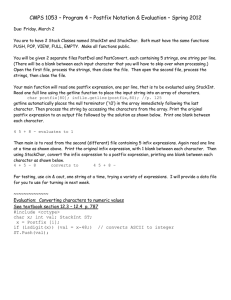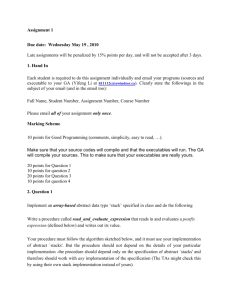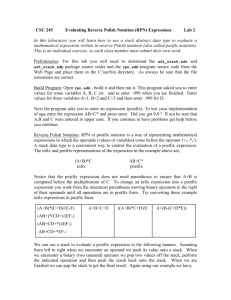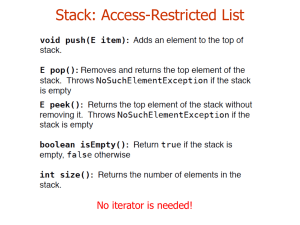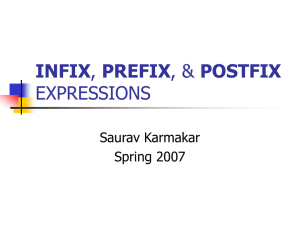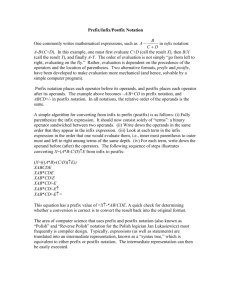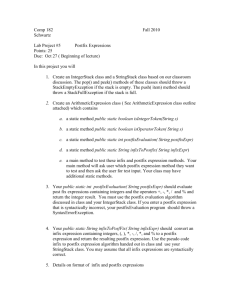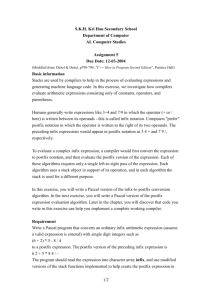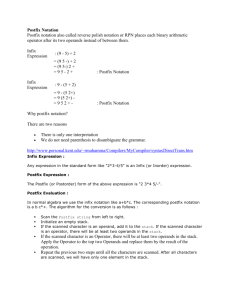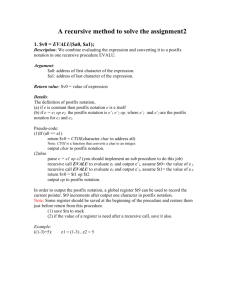Prefix, Postfix, Infix Notation: Conversion & Stacks
advertisement
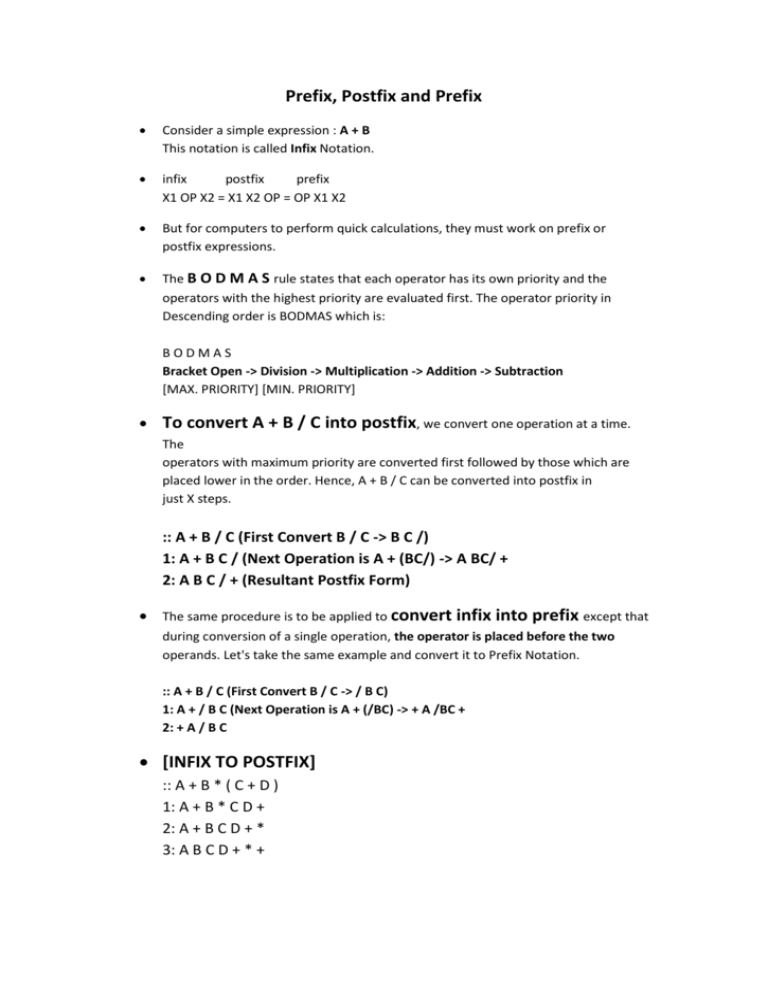
Prefix, Postfix and Prefix Consider a simple expression : A + B This notation is called Infix Notation. infix postfix prefix X1 OP X2 = X1 X2 OP = OP X1 X2 But for computers to perform quick calculations, they must work on prefix or postfix expressions. The B O D M A S rule states that each operator has its own priority and the operators with the highest priority are evaluated first. The operator priority in Descending order is BODMAS which is: BODMAS Bracket Open -> Division -> Multiplication -> Addition -> Subtraction [MAX. PRIORITY] [MIN. PRIORITY] To convert A + B / C into postfix, we convert one operation at a time. The operators with maximum priority are converted first followed by those which are placed lower in the order. Hence, A + B / C can be converted into postfix in just X steps. :: A + B / C (First Convert B / C -> B C /) 1: A + B C / (Next Operation is A + (BC/) -> A BC/ + 2: A B C / + (Resultant Postfix Form) The same procedure is to be applied to convert infix into prefix except that during conversion of a single operation, the operator is placed before the two operands. Let's take the same example and convert it to Prefix Notation. :: A + B / C (First Convert B / C -> / B C) 1: A + / B C (Next Operation is A + (/BC) -> + A /BC + 2: + A / B C [INFIX TO POSTFIX] :: A + B * ( C + D ) 1: A + B * C D + 2: A + B C D + * 3: A B C D + * + Only the Prefix and Postfix forms are capable of preserving the priority of operations and are hence used for evaluating expressions instead of infix. CONVERSION USING STACKS In this method, we read each character one by one from the infix expression and follow a certain set of steps. The Stack is used to hold only the operators of the expression. Let us see how the above algorithm will be imlemented using an example. Infix String : a+b*c-d Initially the Stack is empty and our Postfix string has no characters. Now, the first character scanned is 'a'. 'a' is added to the Postfix string. The next character scanned is '+'. It being an operator, it is pushed to the stack. Next character scanned is 'b' which will be placed in the Postfix string. Next character is '*' which is an operator. Now, the top element of the stack is '+' which has lower precedence than '*', so '*' will be pushed to the stack. The next character is 'c' which is placed in the Postfix string. Next character scanned is '-'. The topmost character in the stack is '*' which has a higher precedence than '-'. Thus '*' will be popped out from the stack and added to the Postfix string. Even now the stack is not empty. Now the topmost element of the stack is '+' which has equal priority to '-'. So pop the '+' from the stack and add it to the Postfix string. The '-' will be pushed to the stack. Next character is 'd' which is added to Postfix string. Now all characters have been scanned so we must pop the remaining elements from the stack and add it to the Postfix string. At this stage we have only a '-' in the stack. It is popped out and added to the Postfix string. So, after all characters are scanned, this is how the stack and Postfix string will be : End result : Infix String : a+b*c-d Postfix String : abc*+d-

